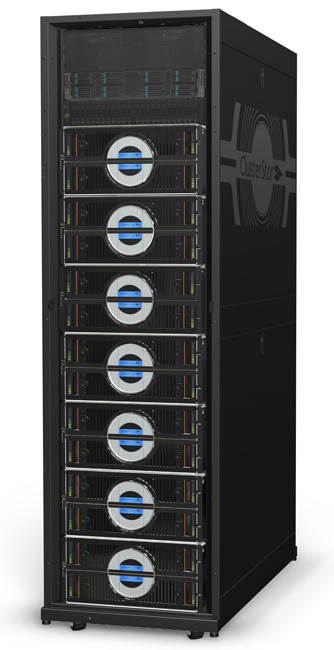![]() Today Seagate Technology and Los Alamos National Laboratory (Los Alamos) announced that they were jointly working on a new archive storage tier for supercomputing data. The two companies are working together to find a way to store the massive amounts of data that are being generated in a way that saves power and is easy to rapidly access in order to improve the overall research of the companies using the machines.
Today Seagate Technology and Los Alamos National Laboratory (Los Alamos) announced that they were jointly working on a new archive storage tier for supercomputing data. The two companies are working together to find a way to store the massive amounts of data that are being generated in a way that saves power and is easy to rapidly access in order to improve the overall research of the companies using the machines.
Today Seagate Technology and Los Alamos National Laboratory (Los Alamos) announced that they were jointly working on a new archive storage tier for supercomputing data. The two companies are working together to find a way to store the massive amounts of data that are being generated in a way that saves power and is easy to rapidly access in order to improve the overall research of the companies using the machines.
 Supercomputing and High Performance Computing (HPC) systems generate enormous amounts of data and a large portion of it isn’t needed right away. Organizations using these systems must migrate their data from fast parallel-file systems to slower, more cost-efficient “cold” storage technologies. This sounds like a pretty straightforward approach but it introduces a few issues. While the data being generated isn’t always needed immediately it can still be crucial for the research being conducted and needs to be accessed quickly. Storing the excess data on a cold or static tier could slow access and possibly interfere with research, especially when real-time analysis is critical.
Supercomputing and High Performance Computing (HPC) systems generate enormous amounts of data and a large portion of it isn’t needed right away. Organizations using these systems must migrate their data from fast parallel-file systems to slower, more cost-efficient “cold” storage technologies. This sounds like a pretty straightforward approach but it introduces a few issues. While the data being generated isn’t always needed immediately it can still be crucial for the research being conducted and needs to be accessed quickly. Storing the excess data on a cold or static tier could slow access and possibly interfere with research, especially when real-time analysis is critical.
Seagate and Los Alamos are working together on power-managed disk and software solutions for deep data archiving. The joint effort is aimed at helping organizations achieve better response times while using minimal power. Seagate will be leveraging its ClusterStor A200 system to use automated, policy-driven hierarchical storage management to non-disruptively migrate data off expensive primary storage tiers while keeping it online for fast retrieval, while reducing costs in both time and operations. The HDDs the companies plan on using are high-density, power-managed prototype, no specifics were given beyond that.
Seagate Technology and Los Alamos National Laboratory have worked together in the past with Seagate providing storage for the national laboratory’s Trinity supercomputer. This marks the first of several possible collaborations between the two companies in developing with a focus on enhancing, developing, and deploying cutting-edge solutions for some of the most challenging HPC storage problems.
Seagate ClusterStor Parallel Storage System
Los Alamos National Laboratory
Sign up for the StorageReview newsletter

